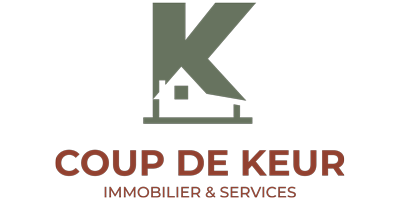The length of time you should keep a document depends on the action, expense, or event the document records. Generally, you must keep your records that support an item of income or deductions on a tax return until the period of limitations for that return runs out. Thus aligning revenue recognition to construction realities ensures sustained health and growth. Also labeled lumpsum turnkey, stipulate a firm project price covering all contractor costs and profits.
Distinguishing Between Fixed Assets and Construction in Progress
A higher asset base can make a company appear more robust, but it also necessitates careful management to ensure that these assets eventually translate into revenue. One of the fundamental aspects of CIP accounting is the categorization of costs. Direct costs include materials, labor, and subcontractor fees, which can be directly attributed to the project.
Impact of Accurate Billing and Revenue Recognition in Construction Projects
With multiple projects running concurrently, it becomes crucial to allocate resources—such as labor, materials, and equipment—efficiently to avoid bottlenecks and ensure timely project completion. Project management software like Primavera P6 or Microsoft Project can be invaluable in this context. These tools offer features like Gantt charts, resource leveling, and critical path analysis, which help in optimizing resource distribution across various projects. As construction projects grow in complexity, specialized CIP accounting technology and staff training help firms optimize financial oversight.
Construction Accounting Compliance And Risk Management
- It can also lead to cash flow problems for contractors if clients delay payment due to billing discrepancies.
- This method involves estimating the progress towards completion at each reporting date and recognizing revenue and expenses in line with the degree of completion.
- For instance, if labor costs are consistently exceeding budgeted amounts, project managers can investigate and address the issue before it escalates.
- Compensate contractors for actual costs incurred plus predetermined profit margin percentage.
- Under the POC method, revenue is recognized as work progresses and can be calculated by multiplying the total estimated revenue by the percentage of completion.
The cost is then amortized over the asset’s useful life through depreciation expenses in subsequent accounting periods. With construction companies quickly evolving, there are more https://toolstone.ru/contacts/ categories and accounts to consider, creating unique challenges for this industry. Among them, learning how to record construction in progress accounting stands out. On the income statement, WIP defers recognizing costs as expenses until the related goods are finished, thereby increasing current period gross profit, operating income, and net income. The percentage-of-completion method relies heavily on accurate progress measurement, which can be achieved through various means such as milestones, cost-to-cost, or units-of-delivery methods. Milestones are predefined stages of the project, and revenue is recognized as these stages are completed.
In conclusion, Viindoo is a comprehensive accounting software solution that can assist construction companies with their CIP accounting needs. We hope you can apply the above information about CIP accounting to your accounting process. Completed Contract – Single revenue recognition moment when a client accepts the finished project after inspection. Getting these cost allocation principles right thus sets up robust foundations for accurate financial picture depictions. Equipment costs form sizeable project spends to mandating maintenance logs to determine capitalization vs expense decisions with depreciation impact appropriately reflected. By aligning methods to these influencing factors, construction accounting stays attuned to ground realities for financial excellence.
ASC 606 demands further disaggregation in notes like opening balances, invoicing milestones, change orders, etc. for investor transparency. General contractors and subcontractors submit competitive bids and negotiate pricing. Contract terms are finalized aligning client requirements with builders’ capabilities. Involves feasibility studies, architectural plans, surveying, zoning permits, and finalizing project https://prosmi.ru/catalog/315 specifications before construction begins.
Expenditures are accumulated in a CIP account throughout the construction timeline. This method involves estimating the progress towards completion at each reporting date and recognizing revenue and expenses in line with the degree of completion. Costs incurred to date are compared against initial budgets to calculate this percentage metric.
What is the journal entry for WIP?
This depreciation expense will then reduce future profits, creating a need for strategic planning to manage the long-term financial implications. Recognizing revenue from Construction-in-Progress (CIP) projects is a nuanced process that requires careful consideration of various accounting principles and industry standards. One widely adopted method is the percentage-of-completion approach, which allows companies to recognize revenue based on the project’s progress.
The percentage of completion method provides the timeliest information on financial performance as income and expenses are recognized throughout the construction period. However, it relies heavily on accurate progress estimates and is more complex to implement. Depreciation is calculated using several methods, including straight-line, accelerated, and units of production. Straight-line depreciation is the most commonly used method in construction in progress accounting. It involves dividing the asset’s cost by its useful life and allocating an equal amount of the cost to each accounting period over the asset’s life.
This transition is essential to meet accounting standards and allows businesses to log their investment in new constructions on their books accurately. Construction companies and contractors understand construction projects can https://prodobavki.com/legacy_documents/23.html span months or years before completion due to the scope of work. Between the start and end of a project, companies must maintain construction accounting records to track costs and revenues. It’s a method a construction company uses to record and report financial transactions and progress from beginning to end. It’s also crucial when a company needs to secure bank loans, demonstrate bond capacity, and receive audit and assurance services. In this article, we will provide an overview of the basics of construction in progress accounting and its importance in effective construction financial management.
